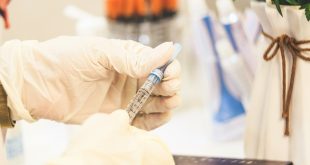Introduction
Cosmetic procedures have come a long way in recent years, with non-invasive options becoming increasingly popular. These procedures offer the benefits of enhancing your appearance without the need for surgery or lengthy recovery times. Curious about what non-invasive cosmetic procedures can do for you? Let’s explore the top 10 options available today.
Botox Injections
What is Botox?
Botox is a neurotoxin derived from Clostridium botulinum bacteria. It works by temporarily paralyzing muscles, reducing the appearance of fine lines and wrinkles.
Benefits and Common Uses
Botox is primarily used to smooth out wrinkles on the forehead, between the eyebrows, and around the eyes (crow’s feet). It can also be used to treat excessive sweating and migraines.
Procedure and Recovery
The Botox procedure is quick, usually taking about 10-15 minutes. Recovery is minimal, with most people returning to their normal activities immediately. Results typically appear within a few days and last for 3-6 months.
Dermal Fillers
Types of Dermal Fillers
Dermal fillers come in various types, including hyaluronic acid fillers (like Juvederm and Restylane), calcium hydroxylapatite (Radiesse), and poly-L-lactic acid (Sculptra).
Benefits and Applications
Dermal fillers are used to restore volume to the face, plump lips, and smooth out wrinkles and folds. They can also enhance the contours of the face, such as the cheeks and jawline.
Procedure and Recovery
The procedure involves injecting the filler into the targeted areas, which takes about 30 minutes. Recovery is minimal, with slight swelling and bruising subsiding within a few days. Results can last from 6 months to 2 years, depending on the type of filler used.
Chemical Peels
What is a Chemical Peel?
A chemical peel involves applying a solution to the skin that causes it to exfoliate and peel off, revealing new, smoother skin underneath.
Types and Benefits
There are three types of chemical peels: superficial, medium, and deep. Each type targets different skin issues, from fine lines and acne scars to deeper wrinkles and severe sun damage.
Procedure and Recovery
The procedure can take from 30 minutes to an hour, depending on the peel’s depth. Recovery varies, with superficial peels requiring a few days and deep peels needing up to several weeks. Benefits include improved skin texture, reduced wrinkles, and a more even skin tone.
Microdermabrasion
What is Microdermabrasion?
Microdermabrasion is a minimally invasive procedure that exfoliates the skin using a special device with an abrasive surface.
Benefits and Ideal Candidates
It helps improve the appearance of sun damage, wrinkles, fine lines, age spots, acne scarring, and other skin concerns. Ideal candidates are those looking for a quick refresh with no downtime.
Procedure and Recovery
The procedure usually takes about 30 minutes. Recovery is immediate, with minimal redness that fades quickly. Multiple sessions are often needed for optimal results.
Laser Hair Removal
How Laser Hair Removal Works
Laser hair removal uses concentrated light to target and destroy hair follicles, preventing future hair growth.
Benefits and Effectiveness
It offers long-lasting hair reduction, making it a popular choice for areas like the legs, underarms, bikini line, and face.
Procedure and Recovery
Each session can take from a few minutes to an hour, depending on the treatment area. Recovery is quick, with most people experiencing only mild redness. Multiple sessions are needed for best results, with hair gradually becoming finer and lighter.
Laser Skin Resurfacing
Types of Laser Skin Resurfacing
There are two main types: ablative lasers, which remove the outer layers of skin, and non-ablative lasers, which stimulate collagen growth without removing skin layers.
Benefits and Results
Laser skin resurfacing can reduce wrinkles, scars, and sun damage, improving overall skin texture and tone.
Procedure and Recovery
The procedure time varies from 30 minutes to 2 hours. Recovery can range from a few days to several weeks, depending on the laser type and intensity. Results can be long-lasting, especially with proper skincare maintenance.
CoolSculpting
What is CoolSculpting?
CoolSculpting is a non-invasive fat reduction treatment that uses controlled cooling to freeze and eliminate fat cells.
Benefits and Target Areas
It’s effective for stubborn fat areas like the abdomen, thighs, flanks, and double chin.
Procedure and Recovery
Each session takes about an hour per area. There is no downtime, and patients can return to normal activities immediately. Results appear gradually over several weeks as the body processes and eliminates the frozen fat cells.
Microneedling
What is Microneedling?
Microneedling involves using a device with fine needles to create tiny punctures in the skin, stimulating collagen production.
Benefits and Skin Issues Addressed
It can improve the appearance of scars, wrinkles, large pores, and stretch marks.
Procedure and Recovery
The procedure takes about 30 minutes. Recovery time is minimal, with mild redness and swelling that subsides within a few days. Multiple sessions are recommended for optimal results.
Ultherapy
What is Ultherapy?
Ultherapy uses focused ultrasound energy to lift and tighten the skin on the face, neck, and chest.
Benefits and Ideal Candidates
It’s an excellent option for those looking to combat sagging skin and achieve a more youthful appearance without surgery.
Procedure and Recovery
The procedure takes about 60-90 minutes. There is no downtime, and patients can resume normal activities immediately. Results develop gradually over 2-3 months as collagen production increases.
Intense Pulsed Light (IPL) Therapy
How IPL Therapy Works
IPL therapy uses broad-spectrum light to target pigmentation, broken capillaries, and other skin imperfections.
Benefits and Skin Conditions Treated
It’s effective for treating sun damage, age spots, rosacea, and fine lines.
Procedure and Recovery
Each session takes about 30 minutes. Recovery is minimal, with mild redness that subsides quickly. Multiple sessions are often needed for the best results, with improvements visible after each treatment.
Conclusion
Non-invasive cosmetic procedures offer a range of benefits, from reducing wrinkles and fine lines to improving skin texture and tone. They provide effective solutions with minimal downtime, making them an attractive option for those seeking cosmetic enhancements without the risks and recovery time associated with surgery. Whether you’re looking to address specific skin concerns or simply maintain a youthful appearance, there’s likely a non-invasive procedure that can help you achieve your goals.
FAQs
What is the difference between Botox and dermal fillers?
Botox temporarily paralyzes muscles to reduce wrinkles, while dermal fillers add volume to the skin to smooth out wrinkles and enhance facial contours.
How long do the results of non-invasive procedures last?
The duration of results varies by procedure. Botox typically lasts 3-6 months, dermal fillers can last from 6 months to 2 years, and other treatments like laser resurfacing and microneedling may offer longer-lasting results with proper maintenance.
Are non-invasive cosmetic procedures safe?
Yes, when performed by qualified professionals, non-invasive cosmetic procedures are generally safe. However, it’s essential to follow pre- and post-procedure care instructions to minimize risks and achieve the best results.
Can I combine multiple non-invasive procedures?
Yes, many people combine procedures, such as Botox and dermal fillers, to achieve comprehensive results. Consult with your provider to create a personalized treatment plan.
How do I choose the right non-invasive procedure for my skin concerns?
Consult with a licensed dermatologist or cosmetic professional. They can assess your skin type and concerns, recommending the most appropriate procedures to help you achieve your desired outcome.







